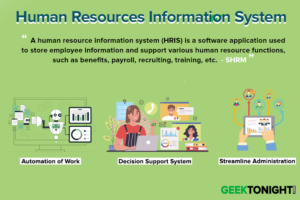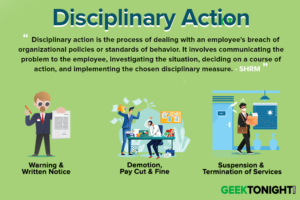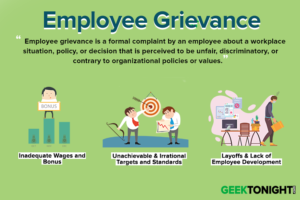There are many challenges which organisations are facing as a new century unfolds before us. According to Michael Hitt and his colleagues; they have identified increasing globalization and the technological revolution as two primary factors that make for a new competitive landscape.
The organisations have to take a number of actions to address the uncertainty and turbulence in the external environment was suggested by them. These actions suggested by them includes, developing employee skills, effectively using new technology, developing new organisational structures, and building cultures that foster learning and innovation. These actions obviously have a great deal to do with human resource development.
Table of Content
5 Challenges of Human Resource Development
The present five challenges currently facing the field of HRD includes:
- Changing Workforce Demographics
- Competing in Global Economy
- Eliminating Skills Gap
- Meeting the Need for Lifelong Individual Learning
- Facilitating Organisational Learning
Changing Workforce Demographics
Around the world, demographic changes have already had a major impact on HR departments. The labour forces have become increasingly diverse, and this has forced organisations to make considerable changes to the way in which they approach people management because it is very much required to cope with the dynamics of the market.
This has not been a one-off shift as demographics are constantly changing, and in some parts of the world, they are doing so at a rapid pace, presenting even greater challenges for HR professionals as they look to hire, train, manage and retain an entirely new generation of workers.
“There are a number of emerging and consolidating demographic trends that are likely to transform the profile of the average worker over the next 20 years” is according to a new report by the SHRM Foundation and the Economist Intelligence Unit (EIU) titled Shaping the Future of HR.
If we consider some more years, there may soon be no such thing as the average worker, and workplaces could become so hugely diverse in terms of gender, age and culture that the strategies used by the HR departments of today may in time become completely redundant. These trends which were changing so fast have several implications for HRD professionals.
- First, the organisations need to address racial and ethnic prejudices that may persist, as well as cultural insensitivity and language differences.
- Second, organisations should continue to provide developmental opportunities that will prepare women for advancement into the senior ranks and provide safe-guards against sexual harassment with the increasing numbers of women in the workforce.
- Third, the aging of the workforce highlights the importance of creating HRD programs. These programs recognize and address the learning related needs of older workers.
Competing in Global Economy
If we look at the U.S. companies, they prepare to compete in a global economy; many are introducing new technologies that require more educated and trained workers. In fact, at present in the United States, over one-half of all jobs require education beyond high school. Thus, in order to be successful, the organisations must hire employees with the knowledge to compete in an increasingly sophisticated market.
For competing in the global economy, it will require more than educating and training workers to meet new challenges. In addition to retraining the workforce, successful companies will institute quality improvement processes and introduce change efforts.
The workforce must learn to be culturally sensitive. The purpose is to communicate and conduct business among different cultures and in other countries. The developing managers to be global leaders have been identified as a major challenge for organisations in this decade.
Eliminating Skills Gap
We had already discussed that for companies to compete successfully in a global economy, they must hire educated workers. If we consider the statistics, almost 30 per cent of today’s high school students fail to graduate, and employers must confront the fact that many young adults entering the workforce are unable to meet current job requirements.
This skills gap poses serious consequences for American companies and for example, how can trainees learn how to operate new equipment if they cannot read and comprehend operating manuals? Furthermore, for new employees to manipulate computer-controlled machines, they have to understand basic math. The business community has a vested interest in education reform and there are some encouraging signs, however.
In order to bridge the skills gap, the other industrialized nations have made systematic changes. For example, Japan and Germany, two of the United States’ biggest competitors, have educational systems that do a better job of teaching students basic skills.
These are needed by most employers and among other things; Germany emphasizes vocational education and school to work transition programs so that school-age children can begin apprenticeship programs as part of their formal education.
Meeting the Need for Lifelong Individual Learning
With the rapid changes that all organisations are facing, it is clear that employees must continue the learning process throughout their careers in order to meet these challenges. To make an ongoing investment in HRD, this need for lifelong learning will require organisations.
The term lifelong learning can mean different things to different employees. For example, for semiskilled workers, it may involve more rudimentary skills training to help them to build their competencies. This learning may mean taking advantage of continuing education opportunities o professional employees. This is particularly important for certified professionals who are required to complete a certain number of continuing education courses. This is to maintain their certificates and to managers, lifelong learning may include attending management seminars that address new management approaches.
The challenges to HRD professionals are to provide a full range of learning opportunities for all kinds of employees and one way that some organisations are meeting this challenge is by establishing multimedia learning centers.
These centres offer a variety of instructional technologies that can be matched to each trainee’s unique learning needs and in this process, individual assessments can determine academic deficiencies or gaps in employees’ performance capabilities, while also pointing out their preferred learning styles.
The self-motivated employees found to be deficient in arithmetic might be trained in an interactive video program allowing them to set their own pace. A multimedia learning centre could also provide teleconferencing facilities for technical and professional employees to participate in a seminar that is being conducted thousands of miles away because the participants are virtually interacting.
Facilitating Organisational Learning
Chris Argyris, Richard Beckhard and more recently Peter Senge have recognized that if organisations are going to make a fundamental change, they must be able to learn, adapt, and change.
Senge advocates that a learning organisation must embrace the following five principles:
- Systems Thinking
- Person Mastery
- Mental Models
- Building Shared Vision
- Team Learning
There has been tremendous interest in the concept of a learning organisation in recent years. For example, according to a 1995 survey of ‘HRD executives; it reported that 94 per cent of the respondents felt that it is important for an organisation to become a learning organisation.
The above-mentioned principles emphasize that at the organizational level, they also have implications at the group and individual levels. One challenge to HRD professionals is to facilitate the transition of traditional training programs to an emphasis on learning principles and tactics, on how learning relates to performance, and more importantly, on the relationship between learning and fundamental change.
The HRD professionals must develop a solid understanding of learning theory and be able to devise learning tools that enhance individual development to do all these things successfully.
Human Resources Tutorial
(Click on Topic to Read)







